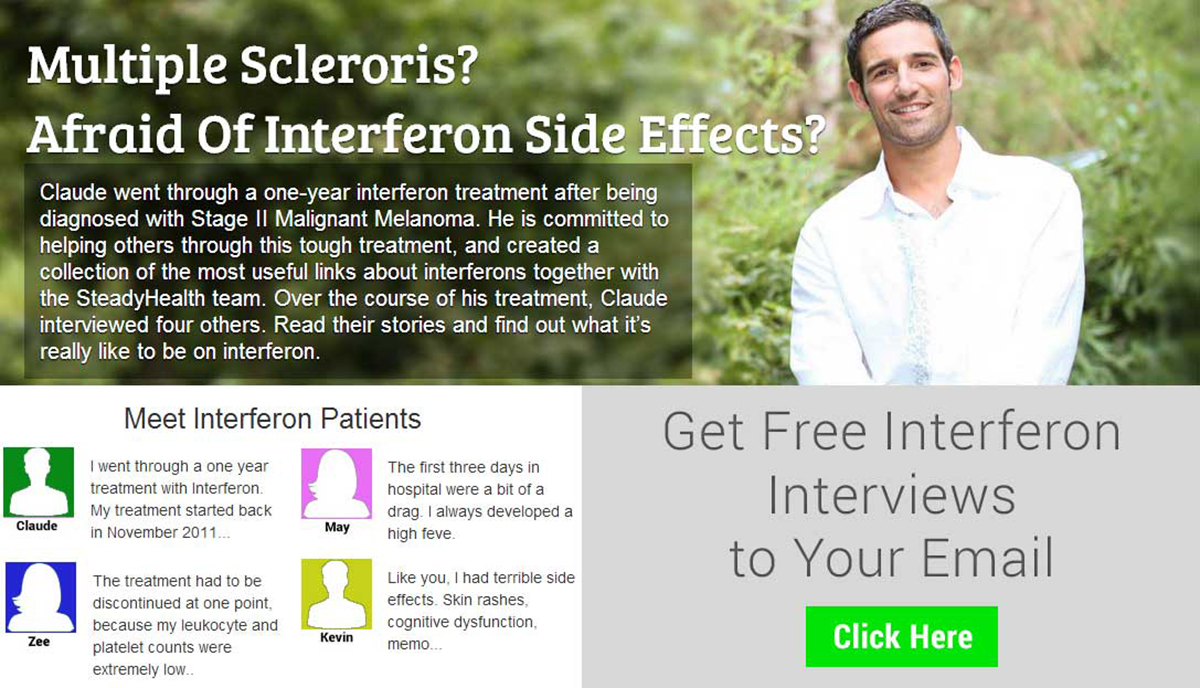Abnormal blood cells produced in the bone marrow develop into a cancerous disease called leukemia. The rapid increase in these abnormal blood cells reduce the function of normal blood cells, which later becomes a life-threatening situation. There are various types of leukemia, depending on the type of blood cells involved, and therapy differs for each type. Interferon treatment is not the first line of treatment for leukemia but it helps improve the body's defense against cancer cells, induces remission, and increases survival rates.
What is Leukemia?
Leukemia is a type of cancer that involves the white blood cells as they are produced in the soft tissue of the bone (bone marrow). In this condition there is an abnormal growth and multiplication of white blood cells, of which there are two types (lymphocytes and myelocytes). This results in crowding out of the red blood cells and platelets in the blood, resulting in anemia, weakness, fever, joint pains, and bleeding tendencies.
Leukemia may be acute or chronic, depending on the rate of progression of the disease. The exact cause is unknown, but some risk factors include exposure to toxic chemicals, radiation, chemotherapy and smoking.
The goals of treatment in leukemia are to kill the cancer cells, to increase the supply of normal blood cells, and to boost one's immunity to cancer. Chemotherapy and high dose radiation therapy are often done to destroy cancer cells. A stem cell transplant may be done to increase the number of new cells, which will develop into normal blood cells. Biological therapy, on the other hand, involves the use of special drugs that stimulate your own immune system to fight cancer. There are various medicines used to boost the immune response and these include interferons.
How Interferons Work
Interferons are natural proteins that are produced by the immune system cells to fight viruses and cancer cells. Scientists have developed synthetic interferons that mimic the natural proteins in the body but in a much stronger way. Some of the diseases where various types of interferons are now being used include melanoma, hepatitis C, multiple sclerosis, and HPV infections. One type, interferon alpha, has been found to be helpful for chronic myelogenous leukemia (CML) and for hairy cell leukemia (HCL). CML is common among adults who are in their 50s. HCL is a rare type of leukemia which is also more likely to occur in middle-aged adults.
Interferons were so named because they interfere with viral infection and in tumor cell activity.
Read More: Interferon Treatment For Multiple Sclerosis
However, interferon injections are very useful when other types of biological treatments such as imatinib do not work, have stopped working, or cannot be tolerated by patients. It may also be used in patients who experiences recurrence of the disease after a bone marrow transplant. Recent studies also show that interferon may be combined with other drugs such as cytarabine to improve over-all survival in patients with leukemia.
Options for Treatment of Leukemia
While in the past, chemotherapy was considered the best option of treatment for leukemia, there are now newer forms of treatment with better patient responses and fewer toxic side effects. Interferons became the next best thing, but the development of imatinib, a tyrosine kinase inhibitor pushed it aside for a while, as a second option. Stem cell transplantation is the only treatment with curative value for leukemia but it is often difficult to look for a matching donor.

When considering the various options for treatment, patients must discuss with their doctors the benefits, cost, side effects and other factors involved.
Things to Consider
The choice of treatment for leukemia depends on many factors such as the type of disease, the stage when it was first diagnosed, current treatment, age of the patient, and personal preferences. Since it is often difficult to find a suitable donor for stem cell transplantation, doctors often start therapy with imatinib while evaluation is going on. Although stem cell transplants can improve over-all survival rates up to 60% , there is also a risk for treatment failure. This is usually due to relapses after transplantation or complications or death during the procedure. Transplantation, therefore, is recommended for younger patients with sibling donors.
When comparing imatinib with interferon alpha, it is easy to see that imatinib has the advantage of being available in oral form (pills to be taken by mouth), while interferon has to be injected repeatedly under the skin. Imatinib is also generally well tolerated while interferon has significant side effects. These side effects include flu-like symptoms such as fever, chills, headaches, fatigue, muscle aches, joint pains and weakness. Although these symptoms may last only for a few days, some patients experience more serious signs of toxicities such as nausea and vomiting, depression, weight loss and peripheral neuropathy. It may also affect thyroid, liver and blood function, as evidenced by abnormal laboratory test results. These side effects, however, are temporary and can be reversed by reducing dosage of the drug administered. Flu-like symptoms may be relieved by taking acetaminophen or other pain relievers before and after interferon injections. Blood chemistry exams must be done regularly to monitor liver, thyroid and blood functions during therapy.
Read More: Interferon Therapy For HPV Infection
Patients who do not respond well to imatinib within three months may be given interferon alpha in addition to the drug.
Combination Therapy
Research is still on-going on the various therapeutic combinations that may work for leukemia. This also includes studies on the use of pegylated form of interferon, which is a longer acting version of the drug. Pegylated interferon is administered in small doses and has fewer side effects. These factors have therefore revived researchers' interest in interferon therapy for leukemia.
Despite the effectiveness of new drugs, there remains a niche yet critical role for interferon, especially when used in combination with other therapies:
- Enhanced Efficacy: Combining interferon with other treatments can increase the likelihood of a better therapeutic response, especially in patients who don't respond adequately to first-line treatments.
- Targeting Different Mechanisms: Interferon, with its unique action mechanism, can complement the effects of other drugs, offering a multifaceted attack against leukemia cells.
- Reduced Resistance: Using combination therapy can mitigate the chances of leukemia cells developing resistance, a concern often associated with long-term drug administration.
However, combination therapy is not devoid of challenges. The introduction of multiple agents can amplify side effects and potentially introduce new ones. Common side effects of interferon therapy include flu-like symptoms, fatigue, and low blood counts. Therefore, it's vital to meticulously monitor patients undergoing combination therapy to manage any adverse effects promptly.
As research progresses, there's hope that such combination strategies might offer enhanced outcomes for leukemia patients who need them the most.
- Talpaz M, Hehlmann R, Quintas-Cardama A, et al. Re-emergence of interferon-α in the treatment of chronic myeloid leukemia. Leukemia 2013. 27, 803-812. http://www.readcube.com/articles/10.1038/leu.2012.313
- WebMD. Leukemia-Topic Overview. http://www.webmd.com/cancer/tc/leukemia-topic-overview
- Jonasch E and Haluska F. Interferon in Oncological Practice: Review of Interferon Biology, Clinical Applications, and Toxicities. The Oncologist February 2001 vol. 6 no. 1 34-55. http://theoncologist.alphamedpress.org/content/6/1/34.full
- Kolibaba,K and Druker,B. Current Status of Treatment for Chronic Myelogenous Leukemia. Medscape. http://www.medscape.com/viewarticle/408451_8
- Stone, R. Optimizing Treatment of Chronic Myeloid Leukemia: A Rational Approach. The Oncologist June 2004 vol. 9 no. 3 259-270. http://theoncologist.alphamedpress.org/content/9/3/259.full
- Photo by steadyhealth.com
- Photo courtesy of Mark M Newell PhD by Flickr : www.flickr.com/photos/marknewell/5800952091/
- www.readcube.com
- www.webmd.com
- theoncologist.alphamedpress.org



Your thoughts on this